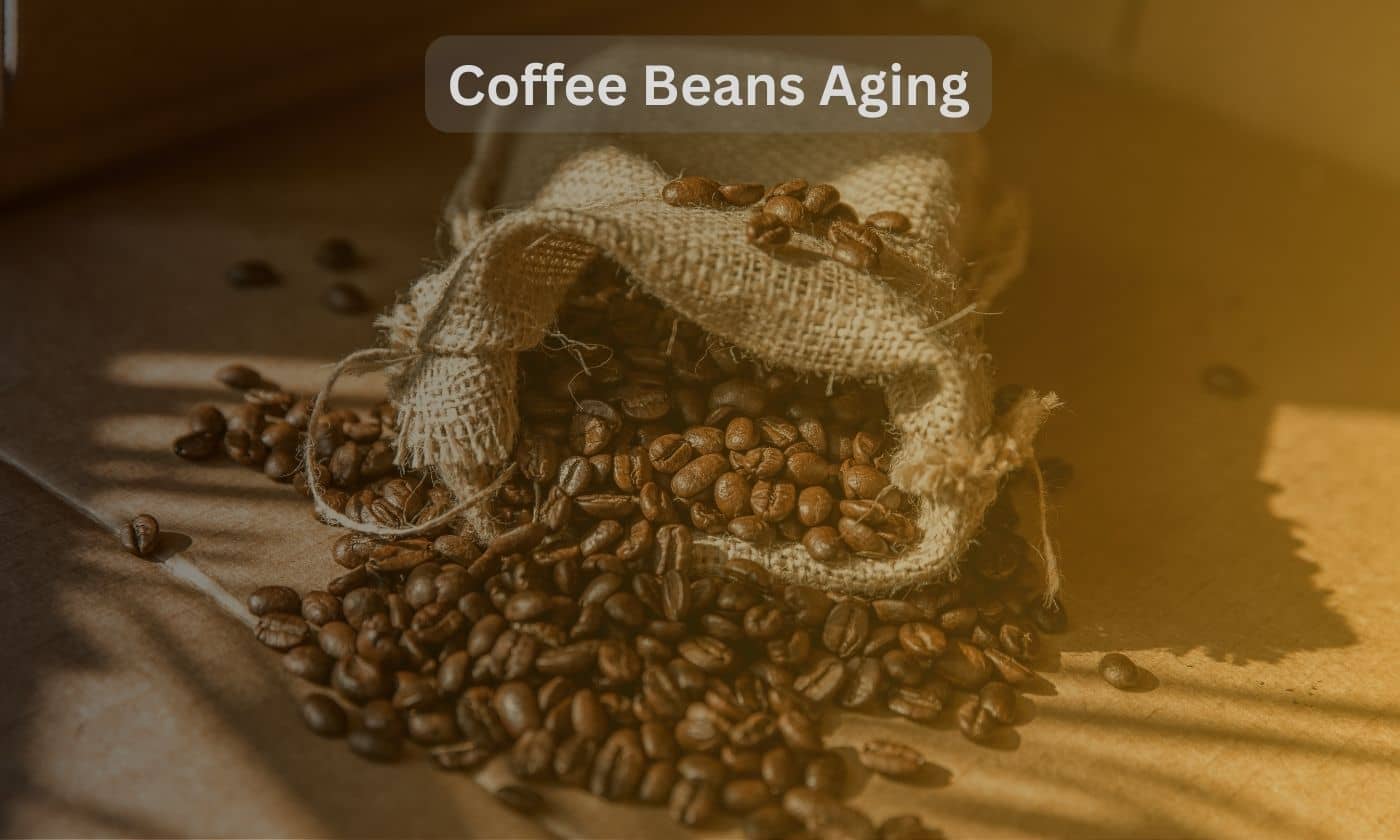Coffee is more than just a beverage; it’s an experience. Have you ever wondered how the flavors of coffee evolve and develop over time?
It’s all about coffee beans aging. In this article, we will take a deep dive into the fascinating world of coffee bean aging and discover the factors that contribute to the creation of complex and flavorful brews.
Whether you’re a coffee aficionado or just starting your coffee journey, understanding the aging process of coffee beans will enrich your appreciation for this beloved drink.
What is Coffee Beans Aging?
Coffee bean aging refers to the natural process that occurs after the roasting of coffee beans. During this period, the beans go through chemical changes that impact their flavors, aromas, and overall taste.
Just like a fine wine, coffee beans improve with age, developing unique characteristics that enhance the brewing experience.
Table of Contents
Factors Affecting Coffee Beans Aging:
A. Time Since Roasting:
The duration since roasting plays a crucial role in coffee bean aging.
Freshly roasted beans have vibrant and intense flavors, while aged beans exhibit a more mellow and complex profile.
B. Oxygen Exposure:
Oxygen exposure greatly influences coffee bean aging.
When coffee beans come into contact with air, oxidation occurs, leading to the breakdown of certain compounds and the development of new flavors.
C. Storage Conditions:
Proper storage conditions are essential for optimal coffee bean aging. Factors such as temperature, humidity, and light can affect the aging process.
It is crucial to store coffee beans in airtight containers in a cool, dark place to preserve their flavors.
Flavor Evolution with Aging:
As coffee beans age, their flavors evolve and develop. The aging process brings about changes in acidity, aroma, body, and overall taste.
Here are some key aspects of flavor evolution with coffee beans aging:
A. Acidity:
Freshly roasted beans have bright and vibrant acidity, which gradually mellows out over time.
Aged beans often exhibit a more balanced and rounded acidity.
B. Aroma:
The aroma of coffee beans intensifies as they age.
Aged beans can possess rich, deep, and complex aromas that add depth to the coffee’s overall sensory experience.
C. Body:
Coffee beans aging can lead to an increase in the body.
Aged beans tend to have a fuller and more rounded mouthfeel, providing a satisfying and luxurious texture.
D. Taste:
The flavor profile of coffee beans evolves during aging.
Freshly roasted beans may have more pronounced and straightforward flavors, while aged beans develop a range of subtle and nuanced notes, offering a multi-dimensional taste experience.
Understanding Ideal Aging Periods
Different coffee beans and roast levels benefit from specific aging durations. It is essential to understand the ideal aging periods for various types of coffee to achieve the desired flavors. Here are some general guidelines:
A. Single-Origin Coffees:
Single-origin coffees often benefit from shorter aging periods, allowing their unique flavor profiles to shine through. It is recommended to consume these beans within a few weeks to a couple of months after roasting.
B. Blended Coffees:
Blended coffees, which consist of multiple coffee bean varieties, can benefit from longer aging periods. The blending process allows the flavors to harmonize and develop a more cohesive taste. Aging blended coffees for several weeks to a few months can enhance their flavor complexity.
C. Dark Roasts:
Dark roast coffees are typically well-suited for aging due to their bolder and more robust flavors. The extended aging period helps to mellow out the intense characteristics and allows the flavors to integrate and develop a smooth and balanced profile.
Controlling Aging for Consistency
To ensure consistency in flavors, coffee professionals employ various techniques to control the aging process. These techniques help maintain the desired taste profiles of different coffee beans. Here are some methods used to control aging:
A. Resting Period:
After roasting, coffee beans often undergo a resting period before being consumed. This resting period allows the flavors to stabilize and achieve a more consistent taste.
B. Controlled Environment:
Creating a controlled environment with optimal temperature and humidity levels can slow down or speed up the aging process. This helps coffee professionals to achieve specific flavor profiles consistently.
C. Packaging:
Choosing the right packaging is crucial to preserve the flavors during aging. Vacuum-sealed bags or airtight containers protect the coffee beans from oxygen exposure, maintaining their freshness and flavor.
Enjoying Aged Coffee
Brewing and enjoying aged coffee is a delightful experience that allows you to savor the unique flavors developed through the aging process. Here are some tips for making the most of your aged coffee:
A. Brewing Methods:
Experiment with different brewing methods to find the one that best showcases the flavors of your aged coffee.
Pour-over, French press, and espresso-based preparations can all bring out distinct characteristics.
B. Grind Size and Extraction:
Adjust the grind size and extraction parameters to ensure optimal extraction and balance in the cup.
Fine-tuning these factors can help unlock the full potential of aged coffee beans.
C. Appreciation:
Take the time to savor and appreciate the flavors that have developed through the aging process.
Notice the nuances, complexities, and unique qualities that aged coffee brings
Conclusion:
In conclusion, exploring the process of coffee bean aging reveals the intricate journey from fresh to flavorful brews.
As coffee lovers, understanding the impact of time, oxygen exposure, and storage conditions on coffee bean aging allows us to appreciate the complex flavors and aromas that emerge over time.
From the evolving acidity to the intensified aromas and the fuller body, aged coffee beans offer a unique sensory experience.
By recognizing the ideal aging periods for different types of coffee, we can unlock the full potential of their flavor profiles.
As you delve further into the world of coffee, don’t forget to check out the Beginner’s Guide to Coffee Bean page on the Coffee Bean Hours website to expand your knowledge and enhance your coffee experience.
Cheers to the wonderful world of coffee beans aging!
